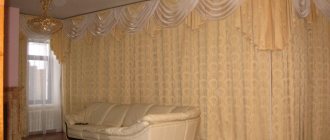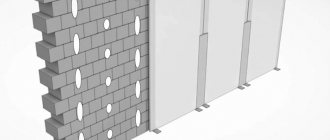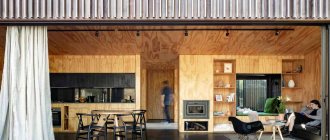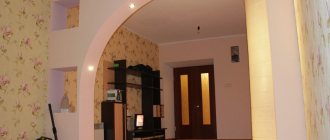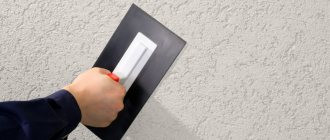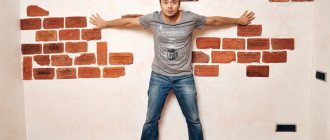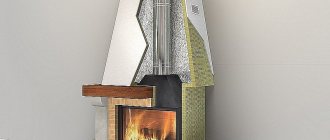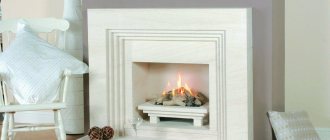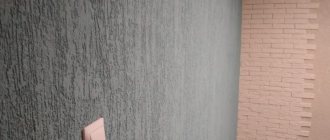Stylish and unusual wall decor with fabrics is a great way to create a special atmosphere in the living rooms of the house. This finishing option allows you to add zest to any design, make it stand out and make it as comfortable as possible for living. Work on decorating walls with fabrics should begin with the choice of materials. This applies to the type and quality of paintings, their colors. The appropriate color scheme, the presence of patterns or their absence will affect the possibility of completely or partially changing the interior. You also need to carefully study the information about fastening methods and choose the one that the owners can do with their own hands. Take into account the advice and instructions of specialists on the choice of fabrics, their fixation, rules for subsequent care, and you can easily transform your apartment and make it unique.
History of wall decoration with fabric
The use of fabrics for wall decoration dates back to Ancient Rome. Craftsmen made luxurious canvases from wool and linen, and painted with patterns. The widespread use of such materials arose in the 12th century in Western Europe. The so-called trellises were woven carpets that completely covered the walls. Of course, only representatives of the nobility could afford such luxury. Biblical motifs became the main theme of such fabrics. Later (around the 15th century) a completely new, eye-catching type of mille-fleur painting was created in Paris. Their main feature was the highlighting of a hero, plot, or animal in the center. The background of such fabrics was dark, and around the woven thematic center there were numerous small flowers and leaves. And in 1633, the Gobelin brothers created a large manufactory for the production of similar fabrics for decorating houses. Such paintings are still known today: they are familiar to us under the name tapestries. Their widespread use ceased after the emergence of paper wallpaper in the 18th century.
Draping curtains
Window decoration occupies one of the key places in creating the interior of a home. At the same time, no windows are complete without curtains. To create the perfect design element in the form of curtains, you need to understand what types of drapery there are. Highlight:
- Classic, neoclassical, baroque. Luxury and high-cost styles. Curtains are made from expensive textiles such as velvet, moire, silk, etc. The canvases are decorated with fringe, lace, cords, tiebacks and holders;
- Modern style. Based on the simplest draperies and curtains in light colors;
- Art Deco style. Good and expensive fabrics with large patterns and good borders. The contrast of bright and dark colors is characteristic;
- Provence, country. These styles are characterized by maximum simplicity and the use of natural fabrics such as silk, linen or cotton. The curtains are presented with simple folds and tiebacks.
Curtains
Advantages and disadvantages
The main advantage of fabric wall decoration is the creation of a special homely atmosphere: even wooden decoration is unable to elevate the interior so much. Other advantages of decorating walls with fabrics include:
- the ability to create a general composition of finishing and identical upholstery of upholstered furniture;
- environmental friendliness of most materials;
- increased sound insulation of walls;
- high tissue resistance to mechanical damage;
- maintaining good vapor permeability of walls;
- quick installation without joints (or with just 1-2 joints on a long wall);
- the possibility of additional invisible sound insulation and insulation (although not feasible with all types of fabric fastening).
As for the disadvantages of such decoration, it is worth remembering: the fabric will collect dust and therefore will require frequent cleaning. Canvases in sunny rooms can quickly fade. The price of the material itself (even when attaching the fabric with your own hands) is quite high, and fixing the fabric near electrical points is quite a difficult job.
Stretch
There are several ways by which you can quickly and efficiently cover walls with fabric yourself, without the help of qualified specialists. To stretch synthetic fabric with your own hands, you need to prepare the appropriate tools and fasteners:
- wooden slats;
- dowel nails;
- hammer and nails;
- drill and screwdriver;
- building level.
You will need a pencil and a ruler to measure the required distance and make marks. The advantage of this method of decoration is that soundproofing material can be laid in the space between the canvas and the wall formed during the work.
The process begins with the installation of a kind of frame. A horizontal strip is attached along the entire perimeter of the room under the ceiling using dowel nails. This design is also assembled along the baseboards.
The fabric is fixed using furniture staples, but if you are using a fairly thick fabric, you can use a hammer and furniture nails. The entire area of the sheathed surface must be covered with fabric
It is important to stretch the tension evenly, avoiding sagging of the fabric.
These measures will help avoid tearing of the material during stretching:
- The first attachment point is in the middle of the ceiling batten. Trying to stretch the fabric evenly, it is fastened to the end of the slats in one direction, and then repeat all the steps in the other.
- After completion of the operation, they begin to fix the tissue to the lower rail, fixed along the floor. They also start from the middle and gradually move away from the first point of fixation in both directions at the same time.
The stretch is performed from the middle of the wall, moving in both directions at the same time. During work, you need to constantly monitor the degree of tension to prevent sagging or tearing of the fabric. At the end of the process, all attachment points are covered with molding and baseboards. The photo shows that strict adherence to the rules allows you to achieve a positive result.
Material selection
The best solution for decorating walls with fabric in residential premises is to choose special fabrics designed specifically for mounting as decoration. They are completely safe (painted with harmless paints), retain their brightness well for a long time, but are very expensive. Inexpensive options include furniture fabrics (jacquard, tapestry). The dense weave of the fabrics ensures lightness while maintaining integrity. Such fabrics fade slowly. An additional advantage is the creation of good sound insulation in the rooms. It is acceptable to use natural fabrics with a less dense weave and, accordingly, less wear resistance (linen, cotton and sisal in their pure form or with a small percentage of viscose). The use of such materials allows you to create a special coziness and guarantees environmentally friendly finishing of the premises. Light and translucent fabrics (taffeta, cambric) are least often used for interior decoration. They are suitable for decorating individual sections of walls.
Software for modeling room decorations
Methods for attaching a mirror depending on the type of wall surface
The Sweet Home 3D program is distributed completely free of charge. You can download the distribution at https://www.sweethome3d.com/ru/download.jsp. This package has open source code posted on https://sourceforge.net/. This allows experienced programmers to change the application's capabilities to suit their needs for draping walls with fabric. Great technology. But, as we believe, there are not so many C++ masters among our readers. For this reason, we propose to limit ourselves to considering the capabilities of Sweet Home 3D in relation to wall drapery with fabric. Not that a single instruction could be given, but...
Firstly, anyone can discuss their problem that arose while using the package on the forum. It should be noted that all information is presented in English, but using the Yandex translator, anyone can rephrase the question properly. In fairness, it should be noted that many portals today are forgotten. In the case of the Sweet Home design modeling program, everything is just the opposite. Topics for 2015, although not very actively, are being discussed.
Thick fabric on the wall
It's nice to have a library of 3D models. What does this mean? The page contains useful links with various objects created by application users, such as:
- Accessories.
- Import from previous versions of the application.
But this is not the most important thing. Any advanced user of three-dimensional modeling programs can, with their own hands, completely independently create any imaginable objects and carry out the perfect drapery of walls with fabric in virtual reality. The program supports object file extensions:
- OBJ;
- DAE;
- KM;
- 3DS.
Drapery model from 3D Studio Max
As you can see, there is a fairly wide list. In particular, 3D Studio Max models are supported. Let us add that the commercial version of this application is quite expensive. And we do not encourage our readers to violate the copyrights of third parties. From the above, you can understand that you should get free software for modeling three-dimensional objects on the Internet, or purchase a license from the manufacturer. Moreover, draping walls with fabric does not require such advanced capabilities. But it is very useful to be able to create three-dimensional objects, as this will allow you to colorfully imagine the result. Be that as it may, in our case, even an ordinary Windows user will be able to decorate their home quite colorfully. That is why we are reviewing the Sweet Home 3D program today.
Methods of fastening fabric
When choosing a fastening method, you must take into account the complexity of the work. If anyone can do the papering of a wall and stretching the fabric onto a strong frame, then it is almost impossible to do neat drapery or upholstery with your own hands without skills. In addition, in any of the methods of fixing the canvases, 1-2 assistants are needed. Correctly leveling or lifting the fabric can only be done when decorating a small section of the wall. To decorate an entire room, one pair of hands is simply not enough. Also pay attention to the complexity of preparation for work: some methods require perfect alignment of the wall. Otherwise, it will be impossible to achieve a neat fit of the fabric.
If you need additional insulation and soundproofing of the room, choose a mounting method in which auxiliary materials can be placed under the fabric.
Fabric stretching
To stretch the fabric onto the wall you will need: slats (nailed along the perimeter of the wall), small nails or a furniture stapler (for fastening the fabric), a piece of fabric (the size is determined by the size of the wall + 3-4 extra cm along all edges for fixing), a building level, dowels The operating procedure is as follows:
- The locations of the slats along the perimeter of the wall are marked under the level. They must be positioned strictly parallel so that the surface of the canvas is not overtightened.
- The fabric is carefully trimmed (it should be a perfect rectangle or square).
- The slats are fixed with dowels to the wall.
- The fabric is folded twice by 1.5-2 cm at the top. Then it is tacked with small nails or furniture staples to the top rail.
- The fabric is stretched to the bottom rail, folds are also made at the bottom and the fabric is fixed. Similar fastening is carried out on the sides.
A layer of sound insulation or insulation can be fixed under the stretched fabric. They are attached directly to the wall.
Gluing fabric
To glue the fabric, you will need the following tools and materials: a piece of fabric for decoration (for a long wall you can use 2 cuts), putty, spatula, paper, glue for paper wallpaper, fine sandpaper, furniture glue, iron, small nails and slats. The gluing work is carried out according to the following scheme:
- The fabric is checked for deformation: a small piece of it should be wetted and dried. If it has decreased in size, then the selected section is completely wetted, dried and smoothed. This will prevent the fabric from shrinking in the future.
- The wall is cleaned with a spatula and, if necessary, leveled with putty. Glue for paper wallpaper is applied to the wall and the paper is glued, which after drying is rubbed with sandpaper. If stains appear on the wall, you need to treat these areas with nitro varnish.
- The wall is covered with furniture varnish, the stretched fabric is carefully glued from top to bottom (work for two people), leveled, and ironed to harden the glue. Additionally, it can be padded on top with slats and nails for the most accurate fixation. They can be removed after 6-12 hours. Excess fabric is trimmed and the edges are treated with glue.
- After 3 days, if there are bumps, you need to break through each of them and go through the iron again. You can install skirting boards and baguettes at the top and bottom.
Drapery
To properly drapery a wall with your own hands you will need: self-tapping screws, a strip (equal to the length of the wall), a piece of fabric (2-3 times longer than the length of the wall and 10-15 cm longer than its height), small nails, building level. The work of fixing the canvas is carried out as follows:
- At the top, the location of the leveling slats is marked. The wall is cleared of debris and dust: there is no need to level the surface.
- The fabric is tucked 3-4 cm under the rail on the left and secured to it with the first nail from underneath. In this case, the fabric should have an allowance at the top of 5-7 cm. After 10-15 cm, a fold is formed along the length of the cut; it is fixed under the rail (on the back side) with a nail. Similar work is done until the end of the cut. On the right, its edge is also tucked under the bottom of the rail and fixed.
- The rail with the collected fabric is fixed according to the established markings. Fastening is carried out with self-tapping screws from the front part (that is, the nail heads will be located on the wall side). In the lower part, the fabric is folded 2 times and carefully grabbed or, according to a similar scheme, fixed on another rail.
When using a lath at the bottom, it is very difficult to maintain an even wave and no deformation. Therefore, the best solution would be to fix the canvas only on the top bar.
Upholstery
Upholstery is one of the most labor-intensive and complex ways to decorate walls. For work you need: a piece of fabric (length and width of the wall + 10 cm of margin on all sides), slats for the frame, dowels, small nails, spatula, putty, furniture glue and glue for heavy wallpaper, iron, thick insulation, building level. To cover the wall under the carriage screed, you need to do the following work:
- Clean the wall with a spatula and level the surface with putty.
- Make a drawing for the required upholstery pattern (with squares or diamonds). Mark the location of the slats below the level and then use dowels to secure these slats to the wall (without a frame, the finished decor will have insignificant volume, and all its luxurious appearance will be lost).
- Draw a similar drawing (exactly as the slats are located!) on whatman paper and make holes at the junction of the slats. Using the blank as a stencil, transfer these points onto the fabric.
- Glue thick insulation on top of the slatted frame with glue for heavy wallpaper.
- Glue the fabric on top of the wall above the slatted frame (1-2 cm higher) using furniture glue and iron it, additionally tack it with nails (then they can be removed). Stretch the fabric to the floor, and carefully moving from top to bottom, nail the material at the previously marked points. Thus, each point must clearly coincide with the intersection of the slatted frame located on the wall.
Pasting
The textile fabric can also be glued to the wall surface by preparing both the fabric and the wall surface in advance.
The walls are prepared as follows: first they are cleaned, then they are puttied and primed. Covering walls with fabric also involves preparing the fabric itself. First of all, a small piece of the material used is measured, and then soaked and dried in a warm place. If the fabric does not shrink, it is used without pre-treatment. If it shrinks, then the entire textile fabric is then wet and dried so that it does not shrink during the gluing process. In any case, before gluing the fabric, it must be ironed thoroughly.
The fabric is cut into strips in length from the ceiling to the floor with allowances of 10-20 cm. Then these strips are sewn together into a large canvas, which should be equal to the area of the wall with allowances along each edge. It is desirable that the canvas be as wide as possible so that there are as few seams as possible. Some sew a fabric equal to the entire surface area of the walls, but working with such a large material is very difficult. Before gluing the canvas to the wall surface, it is ironed again, especially the seams, and then rolled up to the height of the wall.
Pasting walls with fabric is usually done by two people. The fabric is not glued over the entire area, but along the edges of the canvas - on top, sides and bottom. The order of gluing may be different: first one side, then the top, and at the end the second side and bottom, or first the top, then the sides and bottom.
More often, one edge of the wall is first glued, for example the right one, then fabric is applied to it along the entire height from floor to ceiling and ironed with a roller. Then the roll is unwound further and the top edge is glued.
After these two edges of the canvas are glued, i.e. When the glue dries, begin gluing the two remaining edges of the canvas. To do this, the fabric is stretched and glued to the left. Then the canvas is slightly stretched again and glued from below.
Once the glue has dried, you need to carefully remove the slats using pliers and holding the fabric. The stock of textiles at the edges is removed or folded and left under the baseboard. The choice of skirting boards at the edges depends on the style of the room. The advantage of this method is that in places where there were slats, or instead of a baseboard, you can use textile decor - fringe, small draperies made of the same material, etc.
Most often in modern interiors, not all walls are covered with fabric. One or two walls are selected, most often in the living room, which will be the main ones in the room - they are the ones covered with silk or velvet. Mirrors, pictures or a TV are hung on them, i.e. the textile wall becomes the center of attention in the room.
Stylistic directions
You can decorate rooms in an original way using fabrics in completely different styles. The highlight is the use of fabric materials instead of conventional wallpaper. Fabric trim will look appropriate and beautiful in the following directions:
- Art Deco: for the direction it is recommended to select contrasting fabrics with large repeating patterns;
- modern: for styling in this direction, materials with abstractions, bright repeating patterns or special models with one large pattern (similar to photo wallpaper) are suitable;
- urban: for the style, plain fabrics of a light, soft color (or models with discreet patterns) will be preferable;
- ethnic style: fabrics with zigzag patterns of different colors are suitable for the direction;
- 50s style: bright fabrics with repeating flowing patterns will perfectly complement the direction;
- oriental: dark-colored materials with golden or silver patterns are suitable for the style;
- classic: an excellent solution would be to choose canvases with a dark background and eye-catching, repeating patterns and stripes.
What interiors is it suitable for?
Textile coverings have always been used in classic, bohemian, baroque, empire, oriental and ethno motifs. They are characterized by dense printing, pronounced stripes, deep colors, and inclusions of gold threads.
Elements in pastel shades, with small floral or geometric patterns in Provence, retro, hygge, and shabby chic look no worse.
For urban design, Scandinavian houses and lofts, plain jeans, linen, knitwear, and velvet fabrics with unobtrusive tints are suitable.
Nuance! Large bright drawings and abstractions should be used with caution. They are appropriate in art deco, pop art, hi-tech. Fabrics can be used sparingly in any setting. It is only important to choose a harmonious combination of prints and textures.
Wall decoration in the living room
In a spacious room, you can decorate the walls with fabrics in various ways. The most advantageous design options include:
- fabric decor for all living room walls;
You can glue the canvases or stretch them for each surface. In this case, it is allowed to use two materials of the same color scheme with different patterns (for example, decorate a couple of walls with a canvas with stripes, the rest with fabric with ornate patterns).
- allocation of a recreation area;
Behind the sofa and a couple of armchairs, intended for relaxing with friends and family leisure, you can place fabrics of any brightness and saturation (not contradicting the style and overall color scheme). Unusual decoration will give the room an original look, and at the same time will not distract the owners from relaxing.
- stylization of the wall located opposite the recreation area.
This design allows you to highlight the wall opposite the sofa and armchairs. For decoration, it is recommended to select fabrics with soft colors and discreet patterns or no patterns at all.
Door drapery
Draped textiles are used both above the doorway in the form of curtains of various configurations, and inside the door itself (if they have a large area for glazing) - instead of glass.
In the first case, the model of the curtain over the door should replicate as much as possible the one on the windows, in the second - any fabric in the room (bedspreads, tablecloths, walls - if they are covered with fabric).
Draped inserts inside door leaves are used not only for interior doors, but also for cabinet doors. They give the room a unique coziness and originality.
Often, when decorating doorways, it is much more profitable and interesting to use draped textiles instead of doors. This solution will be relevant where there is no need for complete isolation of rooms (from the hallway to the living room, from the living room to the dining room, from the kitchen to the dining room, from the bedroom to the office). The main requirement is that curtains should not interfere with the free movement of people between rooms. To do this, they can be picked up on one or both sides, made in the form of threads.
Wall decoration in the bedroom
Unusual decoration of the bedroom with fabric trim allows you to emphasize its originality and comfort. The best options for using textiles in a living room include:
- highlighting the head of the bed;
Here, the usual gluing of fabric or complete draping of the wall is allowed. It will look unusual not to completely decorate the surface, but to highlight a rectangular area behind the headboard (although the fabric should slightly protrude beyond the headboard on the sides). You can also make a stylish niche with lighting, inside which fabric will be glued.
- allocation of a sleeping bed;
In this option, you can place a couple of strips of fabric on the sides of the bed (for example, behind the bedside tables). It will also look good when gluing or nailing canvases onto two walls near which the bed is located (that is, behind the headboard and to the left or right of the sleeping bed).
- highlighting the entrance or wall opposite the bed.
It will create special comfort and help the owners start every morning in a great mood.
Care instructions
Fabric trim must be cleaned dry. Any wetness of the surface can lead to the appearance of stains and stains on it. Therefore, you need to use a vacuum cleaner to carefully remove accumulated dust. You will need to purchase a special nozzle (with a soft coating) in advance, designed for cleaning furniture and various textile coverings. It will also help to maintain the original condition of the fabric trim by following these recommendations:
- When installing the air conditioner, keep in mind that dust particles carried by the flow will settle on the surface of the canvases. Therefore, it is not recommended to hang the air conditioner opposite a fabric wall or in a room with walls completely decorated with fabric.
- In sunny rooms, fabric fading should be prevented. Therefore, the decoration should be immediately placed on the walls, where the sun’s rays do not reach, or the windows should be covered with thick curtains during the period when the sun penetrates into the room.
- In rooms with fabric decoration it is necessary to maintain low air humidity. If necessary, installing a dehumidifier is recommended.
Textile wallpaper as an alternative to fabric finishing
Textile wallpaper can be a good substitute for gluing or stuffing fabric on walls. In appearance, they are somewhat similar to ordinary fabrics, but they are produced using a special technology: by gluing fabric or individual layers of fibers to a base. The base of the materials itself can be paper or non-woven. The first option has an affordable price, but the duration of maintaining the original appearance of such a finish is quite doubtful: a heavy canvas can last for many years or will soon begin to peel off. Textile wallpaper on a non-woven basis has a higher price, but also lasts longer. For additional protection, this type of finish can be coated with clear varnish or polymer film. This ensures minimal damage to materials and slow fading in the sun. But you need to stick textile wallpaper only on a perfectly flat wall. Despite the possibility of hiding irregularities with a structural finish, the presence of differences will lead to rapid peeling of the material.

